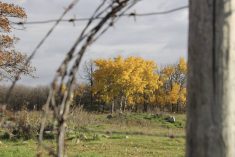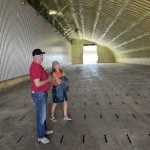Any Alberta producers who were considering AgriStability — but only in hindsight — for the income stabilization plan’s 2023 program year now have until Sept. 29 to apply.
Ottawa and the province announced Aug. 4 that they’ve reopened the jointly-funded program, as wildfires and/or “extremely dry” growing conditions have dragged on many Alberta producers’ work in the months since the program’s regular enrolment deadline of April 30.
Farmers and ranchers were “blindsided” by wildfires and drought and “need support options to make it through this growing season,” provincial Agriculture Minister RJ Sigurdson said in a release.
Read Also

U.S. livestock: Feeder cattle hit contract highs on tight supply
Chicago | Reuters – All Chicago Mercantile Exchange feeder cattle futures and most live cattle futures hit contract highs on…
“Allowing late participation in AgriStability will enable to them to reassess their business risks and make an informed decision about signing up to protect their operations and livelihoods.”
Late participation in AgriStability is offered only in a program year in which a given province or territory’s producers experience a “significant agricultural disaster,” either sector-wide or provincewide.
For example, Alberta poultry producers in February got a late participation sign-up window for the 2022 program year in the wake of significant avian influenza outbreaks in domestic poultry. A similar option was announced in March for B.C. farmers and ranchers for the 2022 program year, citing an unusually cold and wet spring as well as that province’s own rash of avian flu outbreaks.
Between June 1 and Dec. 31 in an affected program year, a province or territory can request that late participation be allowed. The federal government and affected jurisdiction must then agree jointly to extend the deadline.
AgriStability, which in Alberta is administered by Agriculture Financial Services Corp. (AFSC), is meant to cover an enrolled producer’s margin declines greater than 30 per cent, at 80 cents for every dollar of decline.
That said, payouts — including interim payouts — to those who sign up via a late participation option such as this one are reduced by 20 per cent, so as to “encourage proactive enrolment.”
The form to apply for AgriStability under late participation for the 2023 program year is available at the AFSC website and must be submitted by the Sept. 29 deadline. Late participants must also pay an up-front non-refundable fee before the form will be processed; the deadline to pay that fee is Dec. 31, 2023.
‘Threats’
Alberta’s historically bad year for wildfires is ongoing. So far in 2023, the province has recorded 971 wildfires affecting about 18,000 square kilometres in total.
As of Aug. 14, the province reported 88 of those fires as active; of those, 64 are listed as “under control” and all but one of the remaining 24 as “being held.”
As for crop conditions, drought and dry spells have particularly affected Alberta’s south and central regions.
As of Aug. 8 provincewide, crops in conditions rated good-to-excellent account for 42.8 per cent of the estimated total; for south and central regions, those numbers are 28.2 and 35.3 per cent respectively, well below both regions’ five- and 10-year averages.
“Risk management programs like AgriStability are essential to help producers manage these threats to their operations, and we want to ensure they have the time they need to make decisions that are right for their business,” federal Ag Minister Lawrence MacAulay said in the governments’ Aug. 4 release. — Glacier FarmMedia Network
















